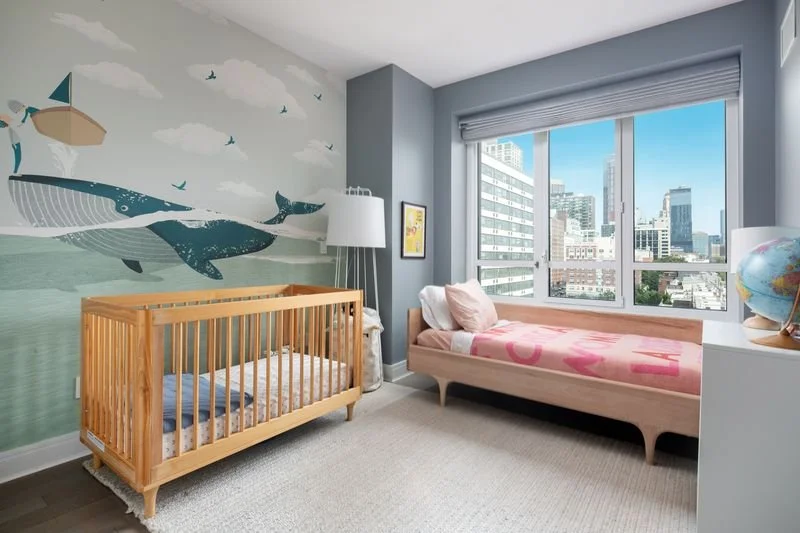Billionaires’ Row, nestled in the heart of Manhattan, is the epitome of luxury living, showcasing an unparalleled collection of prestigious residential skyscrapers. This famed stretch of real estate, where architectural prowess meets lavish comforts, has captured the attention of the world's wealthiest and most discerning buyers. In this article, we will take an exclusive peek into the opulence, extravagance, and allure that defines Billionaires' Row.
From the world's tallest residential buildings to innovative amenities that redefine modern living, you will uncover the elements that make these Manhattan skyscrapers so coveted and exclusive. Join us as we explore the enigmatic world of Billionaires’ Row, providing insight into the remarkable lifestyle, architectural marvels, and grand interiors that epitomize this iconic New York City destination. Embrace the unparalleled grandeur and immerse yourself in the exquisite world of Manhattan's most prestigious residential towers.
The Origins of Billionaires' Row
The famed Billionaires' Row stretches along the southern edge of Central Park, from 57th Street to Columbus Circle, encompassing the most valuable real estate in New York City. Its moniker stems from the ultra-wealthy clientele drawn to the extravagant residential developments, with some of the world's most successful entrepreneurs and celebrities calling this prestigious location home. Billionaires' Row represents the pinnacle of luxury living in Manhattan, characterized by extravagantly designed skyscrapers with breathtaking views, world-class amenities, and unmatched privacy and exclusivity.
Architectural Marvels of Billionaires' Row
Billionaires' Row boasts an impressive roster of renowned architects and developers responsible for creating some of the most innovative and eye-catching residential buildings globally. Among these architectural masterpieces stand:
1. 432 Park Avenue: Designed by architect Rafael Viñoly and developed by CIM Group and Macklowe Properties, 432 Park Avenue reigns as the tallest residential building in the Western Hemisphere. With interiors by Deborah Berke Partners, the building exudes an air of modern elegance. Residents can enjoy the unrivaled city and park views, with every detail meticulously designed to offer the utmost luxury.
2. One57: Developed by Extell and designed by architect Christian de Portzamparc, One57 features 90 stories of ultra-luxe living. Known for its captivating "waterfall" facade, this tower includes a limited collection of residences above a five-star Park Hyatt hotel, providing lavish hotel amenities to its residents.
3. Central Park Tower: Developed by Extell and designed by architects Adrian Smith and Gordon Gill Architecture, Central Park Tower claims the title of the tallest residential building globally and the second tallest building in the United States. The 1,550-foot skyscraper houses opulent living spaces with breathtaking views, lush interiors, and one of the largest and most exclusive private club offerings in any residential building.
4. 53W53: Developed by Hines, Pontiac Land Group, and Goldman Sachs and designed by Pritzker Prize-winning architect Jean Nouvel, 53W53 stands as a work of art in its own right. With its unprecedented design and unique relationship to the Museum of Modern Art, this high-rise captures the essence of New York City's appreciation for both art and architecture.
Luxurious Amenities and Services
Residents of these iconic Billionaires' Row towers enjoy unparalleled services and amenities as part of their lifestyle. Some notable offerings include the following:
1. Spectacular Views: One defining aspect of these luxury skyscrapers is the unobstructed panoramic views they offer, allowing residents to gaze upon Central Park, the Manhattan skyline, and even beyond the ocean.
2. Wellness Spaces: Residents can access state-of-the-art gyms, spas, and treatment rooms to prioritize wellness, often accompanied by personalized fitness plans, yoga studios, massage services, and indoor swimming pools.
3. Entertainment Amenities: Some buildings offer private dining rooms, catering kitchens, movie theaters, and children's playrooms designed to entertain and cater to residents' desires for luxurious living and leisure.
4. Exclusive Clubs: Buildings such as Central Park Tower offer residents an expansive and private club encompassing multiple floors dedicated to wellness, dining, and entertainment, echoing the luxury of a five-star hotel experience.
The Impact of Billionaires' Row on New York City's Real Estate Market
The rise of Billionaires' Row has significantly impacted New York City's real estate market. These ultra-luxury residential buildings command exorbitant prices and have raised the bar for luxury living in Manhattan. As a result, the city’s real estate landscape now caters to higher expectations in terms of design, amenities, and quality.
However, the extravagant prices and exclusivity of Billionaires' Row properties have also raised concerns about limited supply and affordability in the broader real estate market. These iconic skyscrapers embody the pinnacle of architectural innovation, heralding a new era of opulence in New York City's real estate realm.
The Art of Living on Billionaires' Row
Becoming a resident of New York City’s prestigious Billionaires' Row requires more than just financial wherewithal – it demands an appreciation for the finer aspects of life, an eye for design, and a desire for unparalleled service that transcends the ordinary. From enjoying unparalleled views of Central Park to embracing the most innovative and luxurious amenities, living on Billionaires' Row represents the culmination of a lifelong pursuit of excellence and affluence.
Make Your Mark on Billionaires' Row with Off The MRKT
The sheer opulence and grandeur of Manhattan's iconic Billionaires' Row are unparalleled, enticing the world's elite to embrace this luxurious lifestyle. As you embark on your journey to become a part of this prestigious enclave, let Off The MRKT be your trusted partner in navigating New York City's most exclusive residential skyscrapers.
With Off The MRKT by your side, enjoy personalized and professional assistance throughout your real estate journey, ensuring a smooth and successful outcome. Begin your search today for an unparalleled living experience amidst the awe-inspiring architectural marvels and breathtaking amenities of New York City's Billionaires' Row. Learn more about luxury and celebrity houses in New York at Off The MRKT’s real estate features!











